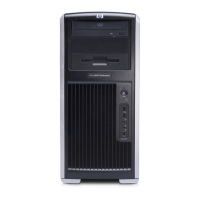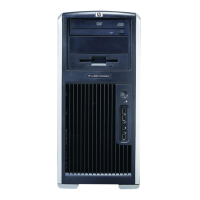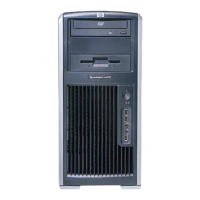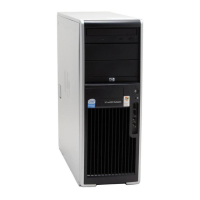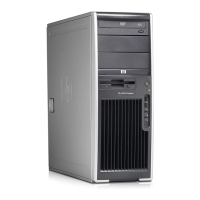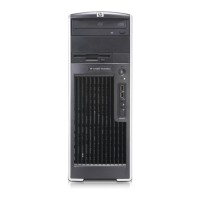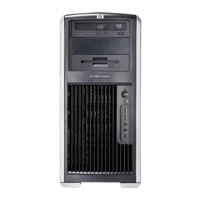PCI Express
PCI Express is a point-to-point architecture and uses a serial data transmission protocol. A single PCI
Express lane consists of four wires and can transmit 250 MB/s in a single direction or 500 MB/s in both
directions simultaneously. This bandwidth is not affected by what is happening on other PCI Express
buses or legacy PCI/PCI-X buses (provided that total bandwidth can be handled by the CPU and the
memory subsystem.) The transmission protocol is somewhat similar to that used for a LAN connection
and contains error correction and detection, packet addressing, and other network features.
PCI Express improves system attributes. PCI Express enables a low-power, scalable, high-bandwidth
communication path with a small number of connections (wires) compared to traditional parallel
interfaces (for example, PCI).
The PCI Express I/O slots can support other PCI Express cards with lesser bus bandwidth than what is
physically defined for the slot. Use the following table to determine compatibility.
For example, a PCI Express x8 card does not work in a PCI Express x1 slot, but a PCI Express x1 card
works in a PCI Express x8 slot.
NOTE Slot 3: The HP xw8400 Workstation contains one PCI Express x8 slot that supports x4
bandwidth. If a PCI Express x8 card is plugged into the PCI Express x8 slot, the card runs at x4
bandwidth.
Slot 4: The HP xw8400 Workstation contains one PCI Express x16 slot that supports x4
bandwidth. If a PCI Express x8 or x16 card is plugged into the PCI Express x8 slot, the card runs
at x4 bandwidth.
Table 4-5 PCI Express compatibility matrix for xw8400
Slot 2
x16 mechanical
x16 electrical
Slot 3
x8 mechanical
x4 electrical
Slot 4
x16 mechanical
x4 electrical
PCI Express x1
Card
Yes Yes Yes
PCI Express x4
Card
Yes Yes Yes
PCI Express x8
Card
Yes Yes Yes
PCI Express x16
Card
Yes No Yes
Removing PCI or PCI Express cards
1. Disconnect power from the system ( Pre-disassembly procedures on page 55), and remove the
access panel (
Access panel on page 60). Place the workstation on its side with the system board
facing up. Remove the PCI retainer (
PCI retainer on page 71) if present.
2. Open the PCI retention clamp by pressing down on the two green clips at the ends of the clamp
(1) and rotating the clamp toward the back of the system.
74 Chapter 4 Removal and replacement procedures ENWW
